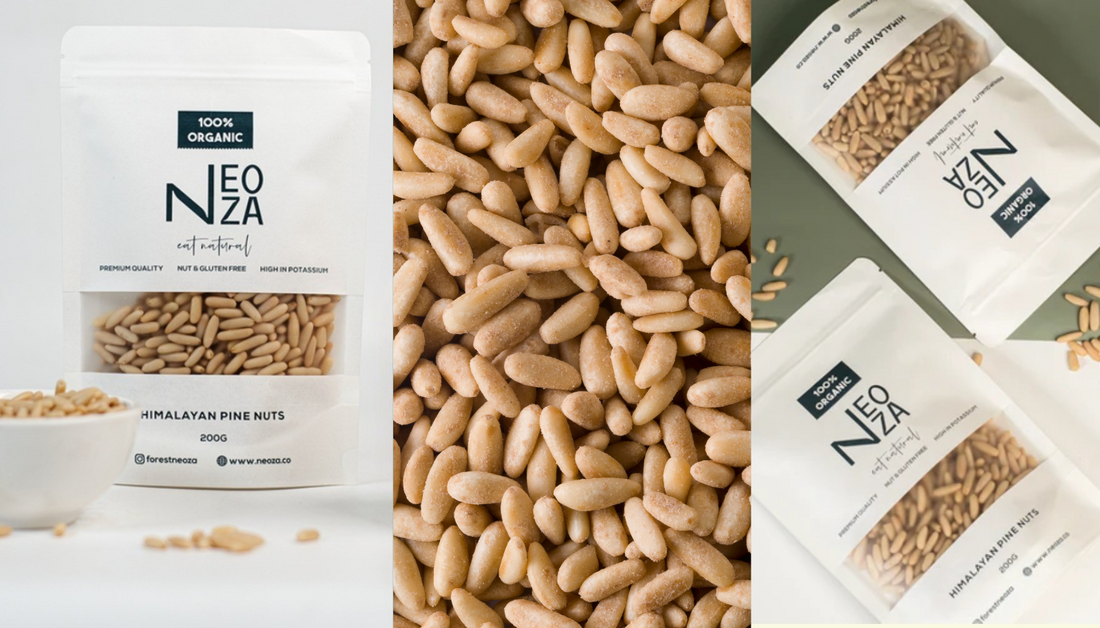
Chilgoza vs. Pista: Comparing Taste, Texture, and Culinary Uses in Pakistan
Hummed BaigIn Pakistan, nuts are a cornerstone of culinary tradition, cherished for their flavors and versatility. Among the many varieties, chilgoza (pine nuts) and pista (pistachios) stand out for their unique profiles and cultural significance. But how do they compare in terms of taste, texture, and culinary uses within Pakistan? This article dives deep into these two beloved nuts, focusing exclusively on their roles in Pakistani cuisine and culture, and presents a concise comparison to help you decide which suits your palate and kitchen best. Let’s crack into it!
Introduction to Chilgoza and Pista
Nuts are more than snacks in Pakistan—they’re symbols of hospitality, health, and celebration. Chilgoza, harvested from the pine forests of the north, and pista, grown locally and imported, are prized for their distinct qualities. While both are staples in Pakistani homes, their differences in taste, texture, and culinary applications spark curiosity. This post explores these aspects, all within the context of Pakistan, to uncover what makes each nut special.
What Are Chilgoza and Pista?
Chilgoza (Pine Nuts)
Chilgoza, dubbed the “king of nuts,” is the seed of pine trees found in Pakistan’s northern regions, including Gilgit-Baltistan, Chitral, and Khyber Pakhtunkhwa. These small, creamy nuts are hand-extracted from pine cones in high-altitude forests, a labor-intensive process that adds to their value. Known for their rich, buttery flavor, chilgoza is a delicacy used in special dishes and cherished as a winter treat.
Pista (Pistachios)
Pista, or pistachios, are grown in Pakistan, particularly in Balochistan’s upland areas like Quetta and Ziarat, though imports supplement supply. These green-hued nuts, encased in hard shells, offer a mildly sweet and nutty taste. Pista is a favorite in sweets, snacks, and savory dishes, widely available from local bazaars to urban supermarkets, making it a household staple.
Comparing Taste, Texture, and Culinary Uses
Taste
-
Chilgoza: Chilgoza has a rich, buttery flavor with a subtle sweetness and a hint of resinous pine. Its decadent taste makes it a standout in Pakistani cuisine, often described as indulgent and slightly savory, perfect for elevating dishes.
-
Pista: Pista offers a milder, nutty taste with a delicate sweetness and earthy undertones. Its flavor is less intense than chilgoza’s, making it versatile for both sweet and savory recipes, appealing to a wide range of palates in Pakistan.
Texture
-
Chilgoza: Creamy and soft, chilgoza melts in the mouth with a smooth, almost velvety texture. This softness contrasts with crunchier nuts, making it ideal for blending into dishes or enjoying as a standalone snack in Pakistan’s northern regions.
-
Pista: Pista is firm and crunchy, providing a satisfying bite. Whether roasted or raw, its crisp texture adds a delightful contrast in Pakistani recipes, from desserts to rice dishes, enhancing mouthfeel.
Culinary Uses in Pakistan
-
Chilgoza: In Pakistani cuisine, chilgoza shines in festive and gourmet dishes. It’s sprinkled over biryani, mixed into zarda (sweet rice), or added to winter sweets like panjeeri, a postpartum treat. Roasted chilgoza is a cozy snack in Gilgit-Baltistan, often paired with tea during cold months. Its luxurious profile makes it a choice for special occasions.
-
Pista: Pista is a culinary workhorse across Pakistan. It’s a star in sweets like barfi, halwa, and sheer khurma, served during Eid and weddings. Crushed pista garnishes korma and pulao, adding color and crunch. Roasted and salted pista is a popular snack in urban centers like Karachi and Lahore, while pista milk is a trendy drink among health enthusiasts.
Comparison Table: Chilgoza vs. Pista
|
Aspect |
Chilgoza |
Pista |
|
Origin |
Gilgit-Baltistan, Chitral |
Balochistan, imports |
|
Taste |
Rich, buttery, slightly sweet |
Mild, nutty, subtly sweet |
|
Texture |
Creamy, soft |
Crunchy, firm |
|
Culinary Uses |
Biryani, zarda, panjeeri, snacks |
Barfi, korma, pulao, milk, snacks |
|
Availability |
Limited, seasonal |
Widespread, year-round |
Cultural Significance in Pakistan
Chilgoza’s Role
Chilgoza carries deep cultural weight, especially in northern Pakistan. In Gilgit-Baltistan, it’s a winter ritual, roasted over fires and shared among families. It symbolizes prosperity, often gifted during festivals or weddings. Chilgoza’s use in traditional remedies, like boosting energy, reflects its revered status in local folklore.
Pista’s Role
Pista is a crowd-pleaser across Pakistan’s diverse regions. It’s synonymous with celebration, adorning sweets at Eid-ul-Fitr and wedding feasts. In urban areas, pista’s vibrant green hue makes it a visual delight in desserts, while its affordability ensures it’s a daily snack for many. From rural Balochistan to bustling Islamabad, pista bridges class and culture.
Market Insights in Pakistan
Chilgoza’s market is niche, with supply tied to seasonal harvests in northern forests. Its scarcity drives prices to PKR 8,000–15,000 per kilogram in cities like Lahore, limiting it to special purchases. Pista, priced at PKR 2,000–4,000 per kilogram, benefits from local production and imports, ensuring year-round availability. Demand for pista spikes during festive seasons, but its broader reach makes it less exclusive.
Which Nut Suits Your Needs?
Choosing between chilgoza and pista depends on your preferences:
-
Taste: Pick chilgoza for a rich, indulgent flavor; choose pista for a milder, versatile taste.
-
Texture: Chilgoza’s creamy softness suits smooth dishes; pista’s crunch enhances varied recipes.
-
Culinary Use: Chilgoza for gourmet or festive dishes; pista for everyday sweets, snacks, or garnishes.
-
Occasion: Chilgoza elevates special moments; pista fits casual and celebratory settings alike.
Conclusion
Chilgoza and pista both enrich Pakistan’s culinary landscape, but they cater to different tastes and needs. Chilgoza’s buttery, creamy profile makes it a luxurious choice for special dishes, while pista’s nutty crunch and versatility suit a range of Pakistani recipes, from daily snacks to festive treats. Whether you’re savoring chilgoza’s richness in a winter biryani or enjoying pista’s vibrance in Eid sweets, both nuts bring joy to the table. Which one will you reach for next?
Got a favorite chilgoza or pista dish? Share it in the comments and subscribe for more Pakistani food insights!
While chilgoza is prized for its unique taste, it’s worth seeing why it’s so premium and why it costs more than many other nuts.
Chilgoza is often compared to almonds too — especially when it comes to price. Check out chilgoza vs almonds to see which one really stands out.
When you’re ready to try the best, shop chilgoza online — carefully sourced and delivered fresh for any special dish or snack.
